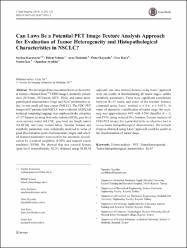| dc.contributor.author | Karacavus, Seyhan | |
| dc.contributor.author | Yılmaz, Bülent | |
| dc.contributor.author | Tasdemir, Arzu | |
| dc.contributor.author | Kayaaltı, Ömer | |
| dc.contributor.author | Kaya, Eser | |
| dc.contributor.author | İçer, Semra | |
| dc.contributor.author | Ayyıldız, Oguzhan | |
| dc.date.accessioned | 2019-07-04T07:52:43Z | |
| dc.date.available | 2019-07-04T07:52:43Z | |
| dc.date.issued | 2018 | en_US |
| dc.identifier.citation | JOURNAL OF DIGITAL IMAGING Volume: 31 Issue: 2 Pages: 210-223 DOI: 10.1007/s10278-017-9992-3 | en_US |
| dc.identifier.issn | 0897-1889 | |
| dc.identifier.issn | eISSN: 1618-727X | |
| dc.identifier.other | PubMed ID: 28685320 | |
| dc.identifier.other | Accession Number: WOS:000428438400010 | |
| dc.identifier.other | DOI: 10.1007/s10278-017-9992-3 | |
| dc.identifier.uri | http://acikerisim.agu.edu.tr/xmlui/handle/20.500.12573/64 | |
| dc.description | This study was funded by TUBITAK (The Scientific and Technological Research Council of Turkey) under Project No.: 113E188. | en_US |
| dc.description.abstract | We investigated the association between the textural features obtained from F-18-FDG images, metabolic parameters (SUVmax(,) SUVmean, MTV, TLG), and tumor histopathological characteristics (stage and Ki-67 proliferation index) in non-small cell lung cancer (NSCLC). The FDG-PET images of 67 patients with NSCLC were evaluated. MATLAB technical computing language was employed in the extraction of 137 features by using first order statistics (FOS), gray-level co-occurrence matrix (GLCM), gray-level run length matrix (GLRLM), and Laws' texture filters. Textural features and metabolic parameters were statistically analyzed in terms of good discrimination power between tumor stages, and selected features/parameters were used in the automatic classification by k-nearest neighbors (k-NN) and support vector machines (SVM). We showed that one textural feature (gray-level nonuniformity, GLN) obtained using GLRLM approach and nine textural features using Laws' approach were successful in discriminating all tumor stages, unlike metabolic parameters. There were significant correlations between Ki-67 index and some of the textural features computed using Laws' method (r = 0.6, p = 0.013). In terms of automatic classification of tumor stage, the accuracy was approximately 84% with k-NN classifier (k = 3) and SVM, using selected five features. Texture analysis of FDG-PET images has a potential to be an objective tool to assess tumor histopathological characteristics. The textural features obtained using Laws' approach could be useful in the discrimination of tumor stage. | en_US |
| dc.description.sponsorship | TUBITAK (The Scientific and Technological Research Council of Turkey) - 113E188 | en_US |
| dc.language.iso | eng | en_US |
| dc.publisher | SPRINGER, 233 SPRING ST, NEW YORK, NY 10013 USA | en_US |
| dc.relation.ispartofseries | JOURNAL OF DIGITAL IMAGING;Volume: 31 Issue: 2 Pages: 210-223 | |
| dc.rights | info:eu-repo/semantics/openAccess | en_US |
| dc.subject | Texture analysis | en_US |
| dc.subject | PET | en_US |
| dc.subject | Tumor heterogeneity | en_US |
| dc.subject | Tumor histopathological characteristics | en_US |
| dc.subject | Ki-67 | en_US |
| dc.title | Can Laws Be a Potential PET Image Texture Analysis Approach for Evaluation of Tumor Heterogeneity and Histopathological Characteristics in NSCLC? | en_US |
| dc.type | article | en_US |
| dc.contributor.department | AGÜ, Mühendislik Fakültesi, Elektrik & Elektronik Mühendisliği Bölümü | en_US |
| dc.contributor.institutionauthor | | |
| dc.relation.publicationcategory | Makale - Uluslararası Hakemli Dergi - Kurum Öğretim Elemanı | en_US |


















